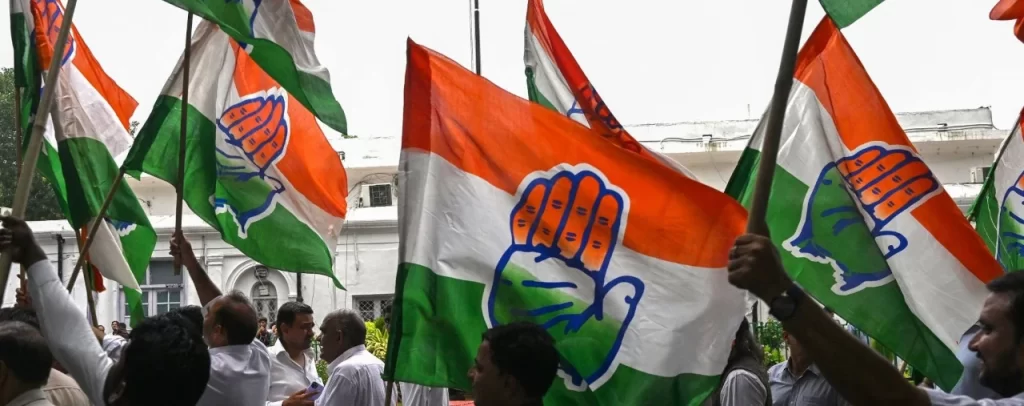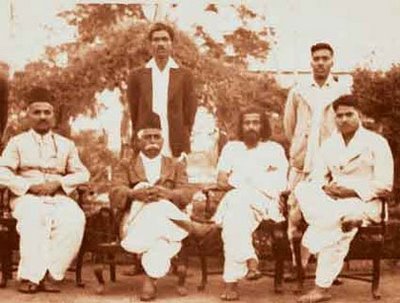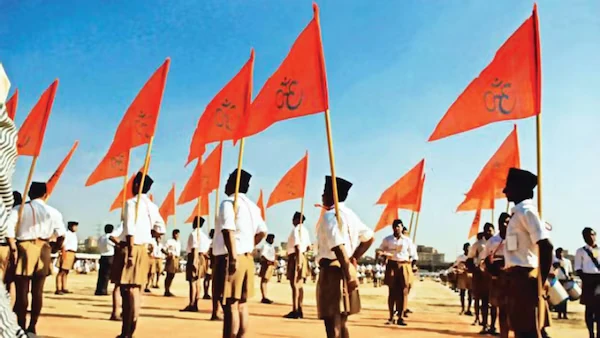Nationalism is a political, social, and cultural ideology or movement that strongly identifies an individual with their Nation, often emphasising shared culture, history, language, and territory.
Nationalism aims to build and maintain a single national identity based on shared characteristics like culture, history, and ancestry and often seeks to defend national interests and sovereignty. It can manifest in various forms.
Civic Nationalism
This is based on shared civic values and political ideologies rather than shared heritage or ethnicity. For example, someone might consider themselves a proud American because they believe in values such as democracy, liberty, and the rule of law rather than because of any specific ethnic or ancestral connections.
Ethnic Nationalism
This form of Nationalism defines the Nation in terms of shared ethnicity, heritage, and descent. It often emphasises a shared language, religion, and customs.
Cultural Nationalism
It focuses on shared cultural practices, rituals, and values that bind a group.
Religious Nationalism
Defines the Nation in terms of shared religion. Here, religious beliefs become critical elements of the national identity.
Territorial Nationalism
Focuses on attachment to a specific geographical region.
Expansionist or Irredentist Nationalism
It seeks to bring all citizens of a nation spread across different countries under one political banner or reclaim territories once part of a historical nation.
Nationalism can be both a unifying force and a divisive one
Positive Aspects
It can promote national unity, pride, and a sense of belonging. It can be a driving force behind self-determination, where groups seek independence and the right to form their Nation.
Negative Aspects
Taken to extremes, Nationalism can lead to xenophobia, ethnocentrism, and chauvinism. It can cause tension between different ethnic or cultural groups within a nation or provoke conflicts with other nations. Hyper-nationalistic sentiments have historically been associated with justifications for wars, colonialism, and genocides.
It is worth noting that Nationalism is a complex and multifaceted phenomenon that can vary greatly depending on the context, and its manifestations and implications can change over time.
Right Wing Nationalism
Right-wing Nationalism, sometimes referred to as “far-right nationalism” or “radical right nationalism,” is a political ideology that combines right-wing politics with nationalist sentiments. While Nationalism generally emphasises a strong identification with one’s Nation, right-wing Nationalism typically intertwines this with specific right-wing values or goals. Some characteristics and features of right-wing Nationalism are given below.
- Ethnocentrism. It emphasises a shared ethnicity or race and the belief in superiority or special status. This can manifest as a desire to maintain a homogenous national culture and identity.
- Anti-Immigration. Opposition to immigration, especially from cultures or ethnicities seen as “other” or “foreign.” This stance often emerges from fears of cultural dilution, economic competition, or security concerns.
- Populism. The belief is that the will of the familiar people should be prioritised over elite or establishment interests. Right-wing nationalists often frame themselves as the protectors of “the people” against perceived corrupt or out-of-touch elites.
- Traditionalism. A reverence for traditional values, norms, and structures, often based on a romanticised view of the past. This can include traditional gender roles, family structures, and religious values.
- Authoritarianism. A preference for strong, centralised authority, sometimes at the expense of democratic norms or checks and balances.
- Anti-Globalisation. Opposition to international cooperation or integration in favour of national sovereignty and autonomy. This can be seen in scepticism or opposition to international organisations, trade agreements, and other forms of global cooperation.
- Anti-leftism. Strong opposition to left-wing ideologies, especially socialism and communism. This opposition can stem from economic, cultural, or political disagreements.
- Militarism. A belief in maintaining a strong military and willingness to use it to assert national interests or defend against perceived threats.
It is essential to understand that not all right-wing nationalists will endorse the above characteristics, and the intensity with which they hold these beliefs can vary widely. Additionally, the specific concerns and issues of right-wing nationalists can differ significantly depending on the country and its historical and cultural context.
In recent years, right-wing nationalist movements have gained traction in several countries, driven by various factors, including economic dislocation, fears of cultural change, and perceived threats to national identity. While these movements can rally significant support, they are also controversial and can be sources of societal division.
Left Wing Nationalism
Left-wing Nationalism exists, although it is distinct in its characteristics and goals from right-wing Nationalism. Left-wing Nationalism often arises from a desire for self-determination, anti-colonialism, or resistance against perceived imperialist or oppressive forces. It emphasises collective solidarity, often focusing on class or economic structure, as opposed to the ethnic or racial focuses seen in some right-wing nationalist movements.
- Anti-Colonial Nationalism. Throughout the 20th Century, many nations under colonial rule developed nationalist movements to achieve independence. These movements often blended nationalistic sentiments with left-wing ideologies that opposed imperialism exploitation. Leaders like India’s Jawaharlal Nehru, Ghana’s Kwame Nkrumah, and Vietnam’s Ho Chi Minh can be seen as figures who championed this blend of left-wing politics and Nationalism.
- Self-Determination. Left-wing nationalists often emphasise the right of people to govern themselves without external interference. This might manifest in movements for regional autonomy or even separatism.
- Social Justice and Equality. Left-wing Nationalism may focus on redistributing resources and wealth to ensure fairness and equity within the Nation. This includes emphasis on welfare systems, public ownership of critical industries, or land reforms.
- Cultural Revival. In some cases, left-wing Nationalism involves reclaiming and celebrating cultural or indigenous practices and identities suppressed or marginalised by dominant groups or external powers.
- Anti-Imperialism and Anti-Globalisation. Left-wing nationalists often resist global forces, especially when seen as neo-colonial or exploitative. This can manifest as opposition to specific trade agreements, international institutions, or foreign military bases.
- Integration of Diverse Groups. Unlike the ethnocentric tendencies in some right-wing nationalist movements, left-wing Nationalism often strives for unity among diverse ethnic, religious, or linguistic groups within a nation, focusing on shared class interests or the collective fight against an external oppressor.
Examples of left-wing nationalist movements include the African National Congress in South Africa during the anti-apartheid struggle, the Sandinistas in Nicaragua, and various socialist movements in Latin America that have combined national pride with anti-imperialist and socialist agendas.
However, it is essential to understand that the line between left-wing and right-wing Nationalism can sometimes be blurry. Movements may adopt elements from both sides or evolve. As with any political ideology or movement, there is a broad spectrum of beliefs and strategies within left-wing Nationalism.
India, before independence, had Nationalism for freedom, post-independence for removal of poverty and building of the Nation under a socialist popular agenda. It is centred on Hindutva and a threat perceived by Islam to drive the National ideology. India’s nationalist movements and ideologies have evolved and been shaped by the Nation’s historical, political, and cultural contexts.
Pre-Independence Nationalism Freedom from British Colonial Rule (Late 19th Century to 1947)
- Nature. Primarily anti-colonial. India’s struggle for independence united various groups across religious, regional, and linguistic divides to work against a common oppressor, the British colonial regime.
- Leaders and Movements. Key figures like Mohandas Gandhi, Jawaharlal Nehru, Sardar Patel, and Subhas Chandra Bose were instrumental in mobilising the masses. Organisations like the Indian National Congress (INC) played pivotal roles. The struggle included non-violent civil disobedience, boycotts, and more militant approaches.
- Religion and Identity. While the dominant narrative was secular and inclusive, religion-based tensions existed. The All-India Muslim League, led by Muhammad Ali Jinnah, began advocating for a separate Muslim-majority nation, culminating in the partition of India and the creation of Pakistan.

Post-Independence Nationalism Nation-building, Modernization and Removal of Poverty (1947 to late 20th Century)
- Nature. Socio-economic development with a socialist bent. The leaders of independent India aimed to build a secular, inclusive nation with a mixed economy that combined capitalist and socialist principles.
- Leaders and Policies. Under Nehru and subsequent leaders, India adopted the Five-Year Plans, emphasising industrialisation, land reforms, and state ownership of key sectors. Policies were aimed at ensuring social justice, especially for marginalised communities.
- Religion and Identity. The Indian state adopted a secular stance, meaning it would not favour any religion. However, religious tensions persisted, with notable violence, Hindu–Muslim, Assam-Bengal, anti-Sikh riots and the riots in Gujarat and as late as 2020 in Delhi.

Contemporary Nationalism Emergence of Hindutva, emphasising Hindu Cultural and Religious Primacy (Late 20th Century to Present)
- Nature. This form of Nationalism sees India primarily as a Hindu Rashtra (Hindu Nation), even though India is constitutionally secular. It often perceives threats from external and internal entities, especially about Islam.
- Leaders and Parties. The Bharatiya Janata Party (BJP) and its ideological parent, the Rashtriya Swayamsevak Sangh (RSS), are the primary champions of this ideology. Key figures include Atal Bihari Vajpayee, L.K. Advani, and Narendra Modi.
- Religion and Identity. Hindutva Nationalism emphasises the importance of Hindu identity and often portrays India’s Muslim population as outsiders or threats. This narrative has led to significant polarisation, increased communal tensions, and violence.

Comparison
- Evolution. India’s Nationalism transitioned from a broad-based, inclusive movement against colonial rule to socio-economic developmental goals and, more recently, to a narrower, religion-centric ideology.
- Inclusivity. The pre-independence and post-independence narratives were broader and aimed to include various religious and cultural groups. In contrast, the Hindutva-driven narrative is more exclusionary, focusing on Hindu identity.
- Response to Threats. While the early nationalists saw the British as the primary threat, contemporary Hindutva nationalism perceives threats from Islamic forces, both external (Pakistan) and internal (Indian Muslim population).
It is essential to note that while the Hindutva-driven narrative is powerful and influential, India remains a diverse country with various regional, linguistic, and community-based identities that only sometimes align with this narrative. The country’s federal structure, democratic institutions, and civil society ensure multiple voices and ideologies.

Conclusion
Nationalism in India, like in many countries, has been a fluid and evolving ideology, shifting in response to historical, political, and socio-cultural contexts. From the unifying anti-colonial sentiments of the pre-independence era to the socio-economic nation-building aspirations of the post-independence period to the more recent surge of Hindutva-centric narratives, the face of Nationalism has changed markedly. While the current trend leans toward a more religion-centric, precisely Hindu-majority narrative, it is imperative to recognise the rich tapestry of identities, cultures, and beliefs that have always been and continue to be integral to the Indian subcontinent.
As the world’s largest democracy, India’s future trajectory in navigating these diverse nationalist ideologies will significantly impact its domestic harmony, development, and role in the global community.
